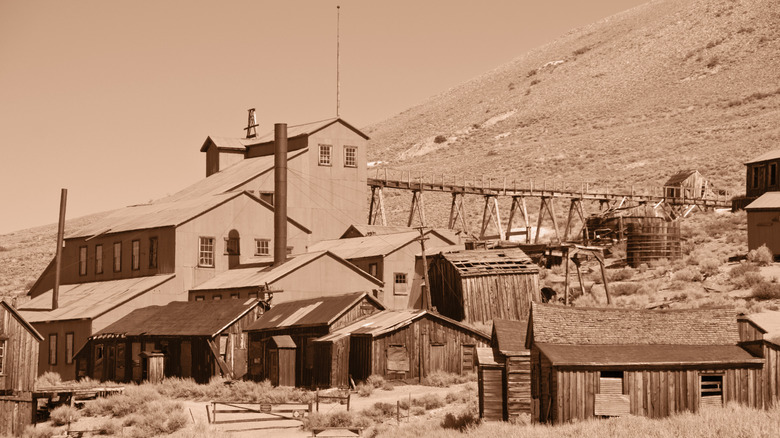How Did The Gold Rush End?
The Gold Rush of the mid-19th century literally put California on the map, leading to its statehood in 1850, decades before the Arizona or New Mexico territories were incorporated into the United States. Prior to the influx of American fortune hunters, the Golden State was still a western frontier, dominated and influenced by Mexico, but in the wild rush to find the precious metal, that changed (via National Geographic). Thousands of people — some estimates put the number as high 300,000 — flooded into California in 1848 after the discovery of gold in the Sacramento Valley at Sutter's Mill along the American River. When James W. Marshall discovered gold flakes in the stream bed on the morning of January 24, it changed the California Territory forever, according to the California Department of Parks and Recreation, and by the spring of 1849, the largest gold rush in American history was well underway.
Struck by gold fever, a stampede of prospective miners converged on San Francisco and the surrounding area, overrunning the countryside in search of the valuable mineral. The mass influx changed the non-Native population of about 1,000 pre-1848 to some 100,000 by the end of 1849 (via History).
The California Gold Rush created an environmental disaster
The land in the Sacramento Valley was laid waste by the new settlers, according to historian Malcolm J. Rohrbough (quoted by National Geographic). The great wealth extracted during the rush was only overshadowed by the even greater environmental damage. Using high-powered jets of water, which developed into hydraulic mining by 1853, they washed away hillsides and pockmarked the foothills of the Sierra Nevadas with thousands of mine shafts, according to National Geographic. "Environmentally, the discovery of gold was a disaster," Rohrbough wrote in his book "Days of Gold: The California Gold Rush and the American Nation." "People described the California landscape as looking like it had been dug up by giant moles."
By 1852, the gold rush had peaked, with prospectors extracting some $81 million worth of gold from the ground. By that point, most of the surface gold had disappeared. The value of the mined gold leveled off to around $45 million a year by 1857 (via History) and the rush was over, but the great migration that the rush sparked never really ended. According to the 2020 U.S. Census, California is the most populous state in the country, with more than 39.5 million people, something some argue can be traced back to the great gold rush of the 1850s.

